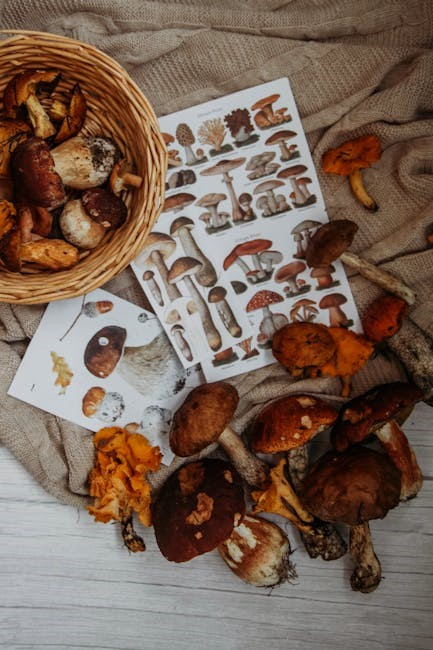Jerry Thomas, often called the father of American mixology, authored the seminal Bartender’s Guide in 1862, revolutionizing cocktail culture with its comprehensive recipes and techniques.
This guide, also known as The Bon-Vivant’s Companion, laid the foundation for modern bartending, showcasing Thomas’s creativity and flair, making it a timeless resource for mixologists worldwide.
1.1 Who Was Jerry Thomas?
Jerry Thomas, an American bartender and mixologist, is often regarded as the father of modern bartending. Born in 1830, he gained fame for his showmanship and innovative techniques behind the bar. Thomas traveled extensively, learning and refining his craft, which he later documented in his groundbreaking book. His work not only established standard cocktail recipes but also elevated bartending into an art form, leaving a lasting legacy in the world of mixology and beyond.
1.2 The Significance of the Bartender’s Guide
The Bartender’s Guide holds immense historical and cultural significance as the first comprehensive cocktail book published in America. It introduced standardized recipes and techniques, shaping modern mixology. The guide’s detailed instructions and diverse drink catalog, including classics like the Mint Julep, established it as an essential resource for bartenders. Its influence endures through numerous reprints, solidifying its role as a foundational text in cocktail history and a testament to the evolution of mixology as an art and craft.

Historical Context of the Bartender’s Guide
Published in 1862, Jerry Thomas’s Bartender’s Guide emerged during a transformative era for cocktails, offering a groundbreaking compilation of recipes and techniques that shaped mixology’s future.
2.1 Publication and Reception in 1862
Jerry Thomas’s Bartender’s Guide was first published in 1862 by Dick & Fitzgerald in New York, marking a milestone in mixology. This groundbreaking book was the first of its kind in America, detailing cocktail recipes and techniques. Its release caused a stir in the culinary world, offering a structured approach to drink-making. The guide quickly became a standard reference for bartenders, praised for its clarity and creativity. It not only elevated Thomas’s reputation but also set the foundation for modern cocktail culture, influencing generations to come.
2.2 Evolution of the Guide Over the Years
Since its initial publication in 1862, Jerry Thomas’s Bartender’s Guide has undergone significant evolution. The 1863 edition added new recipes, expanding its scope. Over the years, reprints and adaptations introduced the guide to new generations, ensuring its relevance. Some versions included additional content not written by Thomas, while others remained faithful to the original. Its enduring popularity highlights its adaptability and the timeless appeal of its recipes, solidifying its place as a foundational text in mixology history.
Key Features of the Bartender’s Guide
The guide offers a detailed collection of cocktail recipes, clear mixing instructions, and techniques, making it an essential resource for both novice and experienced bartenders.
3.1 Comprehensive Collection of Recipes
Jerry Thomas’s Bartender’s Guide features an extensive array of recipes, including classic cocktails like the Mint Julep, Punches, and Cobblers, catering to diverse tastes and preferences. The guide covers a wide range of drinks, from simple mixes to intricate concoctions, ensuring a broad appeal for both professional bartenders and home enthusiasts. This comprehensive approach established it as a foundational text in mixology, offering something for everyone and setting a standard for future recipe collections.
3.2 Instructions for Mixing Drinks

Jerry Thomas’s Bartender’s Guide provides detailed instructions for crafting drinks, emphasizing precision and technique. From measuring ingredients to methods like shaking and stirring, the guide ensures clarity. It includes tips on presentation, such as using shaved ice and garnishes, enhancing the bartending experience. The instructions cater to both professionals and amateurs, making complex recipes accessible. Thomas’s focus on proper preparation and creativity elevated bartending into an art form, setting a high standard for mixologists to follow and innovate upon his foundational techniques.

Jerry Thomas’s Contributions to Mixology
Jerry Thomas revolutionized bartending with his creativity, showmanship, and innovative techniques, establishing mixology as an art form and inspiring future generations of bartenders worldwide.
4.1 Creativity and Showmanship in Bartending
Jerry Thomas was a pioneer in elevating bartending to an art form, blending creativity with theatrical flair. His performances behind the bar, including flaming drinks and elaborate preparations, captivated audiences. Thomas’s showmanship transformed bartending into a spectacle, making it as entertaining as the drinks themselves. His innovative techniques, such as layering and garnishing, set new standards. By combining artistry with precision, Thomas not only crafted exceptional cocktails but also created an immersive experience, inspiring future bartenders to embrace creativity and performance in their work;
4.2 Popularization of Inventive Techniques
Jerry Thomas introduced groundbreaking bartending techniques that reshaped mixology. His innovative methods, such as layering, muddling, and the use of ice, became foundational practices. Thomas popularized the art of creating visually appealing drinks, emphasizing presentation and precision. His guide detailed these techniques, making them accessible to bartenders worldwide. By standardizing these practices, Thomas elevated bartending from a simple craft to a sophisticated art form, influencing generations of mixologists and setting the stage for modern cocktail innovation.
Popular Recipes from the Bartender’s Guide
Jerry Thomas’s guide features iconic cocktails like the Mint Julep, along with diverse drinks such as punches, cobblers, and sours, showcasing his mastery of flavor combinations.
5.1 Classic Cocktails Like the Mint Julep
The Mint Julep stands as one of the most iconic recipes in Jerry Thomas’s guide, blending bourbon, sugar, fresh mint, and crushed ice for a refreshing, aromatic drink. Its simple yet elegant preparation, often served in a silver cup, has made it a timeless classic. Originating in the southern United States, the Mint Julep gained widespread popularity through Thomas’s guide, showcasing his ability to elevate traditional recipes into enduring cocktail staples that continue to captivate mixologists and enthusiasts alike.
5.2 Other Notable Drinks and Their Preparations
Beyond the Mint Julep, Jerry Thomas’s guide features an array of iconic drinks, such as the Brandy Cocktail, Champagne Cocktail, and the Whiskey Sour. Each recipe highlights precise measurements and techniques, showcasing Thomas’s meticulous approach. The Brandy Cocktail, for instance, combines cognac, bitters, and sugar, while the Whiskey Sour blends whiskey, lemon juice, and simple syrup. These preparations emphasize fresh ingredients and balanced flavors, reflecting Thomas’s innovative spirit and elevating classic cocktails to timeless status in mixology history.

Legacy of the Bartender’s Guide
Jerry Thomas’s Bartender’s Guide remains a foundational text in mixology, with reprints ensuring its relevance. It influenced modern bartending and stands as a historical benchmark for cocktail culture.
6.1 Impact on Modern Bartending
Jerry Thomas’s work laid the foundation for modern bartending, inspiring creativity and technique. His guide introduced methods like layering and flaming, still used today. The book’s reprints ensure its relevance, offering timeless recipes and a historical perspective. Bartenders worldwide draw from Thomas’s innovative approaches, blending tradition with contemporary flair. His emphasis on showmanship and precision continues to influence mixology, making him a revered figure in the evolution of cocktail culture.
6.2 Reprints and Continued Relevance
The Bartender’s Guide has seen multiple reprints, ensuring its enduring influence. Its comprehensive recipes and techniques remain relevant, inspiring both professional bartenders and enthusiasts. The guide’s historical significance and practical advice make it a cherished resource, bridging the past and present of mixology. Each reprint introduces Thomas’s work to new generations, cementing his legacy as a pioneer in the field of cocktails and bartending.
Jerry Thomas’s Bartender’s Guide remains a cornerstone of mixology, influencing generations with its timeless recipes and techniques, ensuring his legacy as a pioneer in cocktail culture.
7.1 Summary of Jerry Thomas’s Influence
Jerry Thomas, often hailed as the father of American mixology, left an indelible mark on cocktail culture. His Bartender’s Guide introduced structured recipes, elevating bartending from an art to a science. By popularizing techniques like shaking and mixing, he transformed how drinks were prepared. His creativity and showmanship set new standards, inspiring future generations of bartenders. Thomas’s work not only preserved classic cocktails but also paved the way for modern mixology, ensuring his legacy as a pioneer in the world of drinks.
7.2 The Enduring Appeal of the Bartender’s Guide
Jerry Thomas’s Bartender’s Guide remains a cornerstone of mixology, offering timeless recipes and techniques that continue to inspire. Its detailed instructions and classic cocktails, like the Mint Julep, ensure its relevance. The guide’s historical significance, coupled with its practicality, makes it a cherished resource for both professionals and enthusiasts. Reprints and modern adaptations further cement its place as a foundational text, bridging the past and present of cocktail culture. Its enduring appeal lies in its ability to educate and innovate, ensuring its legacy endures.